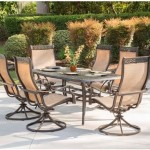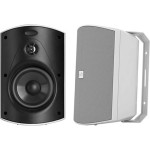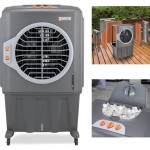```html
Best Heavy Duty Patio Umbrellas: A Comprehensive Guide
Patio umbrellas are essential for creating comfortable and usable outdoor spaces. They provide shade from the sun's harsh rays, allowing individuals to enjoy patios, decks, and gardens without discomfort. However, not all patio umbrellas are created equal. In areas prone to strong winds, intense sun, or frequent use, a heavy-duty patio umbrella is a worthwhile investment. This article explores the key features and considerations when selecting a heavy-duty patio umbrella, ensuring longevity and optimal performance.
Understanding the Need for Heavy-Duty Construction
Standard patio umbrellas often lack the robust construction necessary to withstand challenging weather conditions. Their frames may be made of lightweight aluminum or plastic, which are susceptible to bending or breaking in strong winds. The canopy material may also be thin and prone to tearing or fading. A heavy-duty patio umbrella, on the other hand, is designed to endure these stresses.
The primary difference lies in the materials and construction methods. Heavy-duty umbrellas utilize thicker, more durable materials for the frame, such as heavy-gauge aluminum or steel. The canopy fabric is typically a heavier weight, often solution-dyed acrylic, which offers superior resistance to fading, tearing, and water damage. Reinforced stress points and robust operating mechanisms further contribute to the umbrella's overall durability.
Furthermore, consider the environment where the umbrella will be used. Coastal areas, for instance, experience higher wind speeds and salt spray, which can corrode and damage standard umbrellas quickly. In these areas, a heavy-duty umbrella with corrosion-resistant coatings is crucial. Likewise, areas that experience frequent thunderstorms require umbrellas that can withstand strong gusts of wind without collapsing or being blown away.
Key Features of a Heavy-Duty Patio Umbrella
Several key features distinguish heavy-duty patio umbrellas from their standard counterparts. Understanding these features is essential for making an informed purchasing decision.
Frame Material and Design
The frame is the backbone of any patio umbrella, and its material and design are paramount to its durability. Heavy-duty umbrellas typically feature frames made of heavy-gauge aluminum or steel. Aluminum frames are lightweight and resistant to rust, making them a good choice for coastal areas. Steel frames are stronger and more resistant to bending, but they require powder coating or other protective finishes to prevent rust.
The frame design also plays a significant role. Look for umbrellas with reinforced ribs and hubs. The ribs are the supports that run from the center hub to the edge of the canopy. More ribs generally provide greater stability and wind resistance. The hub is the central point where the ribs connect. A robust hub made of durable materials is essential for preventing breakage.
Consider the diameter of the pole as well. A thicker pole will provide greater stability and reduce the risk of bending or snapping. Look for poles that are at least 1.5 inches in diameter for added strength. Some heavy-duty umbrellas also feature two-piece poles, which allow for easier storage and transportation.
Canopy Fabric and Construction
The canopy fabric is another critical component of a heavy-duty patio umbrella. It provides shade and protection from the elements, and its quality directly impacts the umbrella's longevity. Solution-dyed acrylic fabrics, such as Sunbrella, are widely considered the best choice for outdoor umbrellas. These fabrics are highly resistant to fading, mildew, and water damage. The color is integrated into the fibers during the manufacturing process, ensuring that it won't wash away or fade over time.
Other durable fabric options include polyester with UV protection. While polyester is less expensive than solution-dyed acrylic, it may not be as resistant to fading or tearing. Look for polyester fabrics that are specifically designed for outdoor use and treated with UV inhibitors to protect them from the sun's harmful rays.
The canopy's construction is also important. Look for umbrellas with reinforced seams and edges. Double-stitched seams provide added strength and prevent the fabric from unraveling. Reinforced edges help to prevent tearing and fraying, especially in windy conditions.
Operating Mechanism and Features
The operating mechanism of a patio umbrella should be both durable and easy to use. Crank-lift mechanisms are common and generally reliable, but look for models with heavy-duty cranks and gears. Push-button tilt mechanisms allow you to adjust the angle of the canopy to provide shade throughout the day. A sturdier tilt mechanism is also essential for durability.
Some heavy-duty umbrellas also feature vent systems, which allow air to circulate under the canopy, reducing wind pressure and preventing the umbrella from inverting. Vents can significantly improve the umbrella's performance in windy conditions. Look for umbrellas with multiple vents or large vents for optimal airflow.
Other features to consider include tie straps for securing the canopy when the umbrella is closed and storage bags for protecting the umbrella during the off-season. These features can help to extend the life of the umbrella and keep it looking its best.
Selecting the Right Base for Your Heavy-Duty Umbrella
A heavy-duty patio umbrella requires a sturdy base to ensure stability and prevent it from tipping over in windy conditions. The weight and design of the base are crucial factors to consider.
For freestanding umbrellas, a heavy base is essential. Concrete or cast iron bases are popular choices, as they are strong and stable. Look for bases that weigh at least 50 pounds, and preferably more if you live in a windy area. Some bases also feature wheels for easy portability. Consider a wheeled base if you plan to move the umbrella frequently.
For umbrellas that are used with a patio table, a table base can provide adequate support. However, make sure that the table base is heavy enough to securely hold the umbrella. A general rule of thumb is to choose a table base that weighs at least 40 pounds. If you live in a windy area, you may need a heavier base.
In addition to weight, the base's design is also important. Look for bases with a wide footprint to provide greater stability. Some bases also feature adjustable screws to level the umbrella on uneven surfaces. Make sure that the base is compatible with the diameter of the umbrella pole. Some bases come with adapters to accommodate different pole sizes.
Ultimately, selecting the right heavy-duty patio umbrella involves considering these key aspects. By focusing on the quality of the materials, the robustness of the construction, and the suitability of the base, individuals can ensure their patio umbrella provides years of reliable shade and enjoyment.
```
Best Choice Products 7 5 Ft Heavy Duty Outdoor Market Patio Umbrella With Push Button Tilt Easy Crank Lift In Navy Blue Sky5703 The Home

Best Choice Products 7 5ft Heavy Duty Outdoor Market Patio Umbrella W Push Button Tilt Easy Crank Lift Fog Gray Walmart Com

Best Choice Products 7 5 Ft Heavy Duty Outdoor Market Patio Umbrella With Push Button Tilt Easy Crank Lift In Navy Blue Sky5703 The Home

The 3 Best Patio Umbrellas And Stands Of 2024 Reviews By Wirecutter

Best Choice Products 7 5ft Heavy Duty Outdoor Market Patio Umbrella W Push Button Tilt Easy Crank Lift Navy Stripe Walmart Com

Best Choice Products 18in Round Heavy Duty Steel Patio Umbrella Base Stand W Rust Resistant Finish Broe
The 11 Best Patio Umbrellas And Stands Of 2024

Best Choice Products 29 Lbs Round Heavy Duty Steel Patio Umbrella Base With Rust Resistant Finish In Broe Sky2805 The Home
The 11 Best Patio Umbrellas And Stands Of 2024

Best Choice Products 7 5ft Heavy Duty Outdoor Market Patio Umbrella W Push Button Tilt Easy Crank Lift Tan Walmart Com








